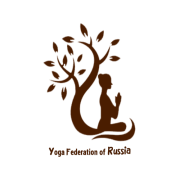

Author(s): Erik J Groessl, Laura Schmalzl, Maria Mazzi and Frank Iszak
Objectives: Lower-income older adults are more likely to be sedentary and can benefit from interventions that increase mobility and physical function. Although many interventions may help sedentary older adults, yoga may be able to produce broader changes and impact multiple health outcomes simultaneously. Other features of yoga such as transportability, home practice, social interaction, and spirituality may increase its appeal to older adults. Methods: Silver Age Yoga Community Outreach (SAYCO) provides free yoga programs to older adults who have limited resources and who reside at community senior centers. The yoga program consists of weekly 60-minute sessions that are specifically designed for inactive older adults. A gentle pace and props are used to make it accessible to all functional levels. Volunteer instructors are recruited to sustain the programs as long as possible. Participants at four new SAYCO programs were invited to complete questionnaires before their first class and again 3 month later. Questionnaires included measures of pain, functional status (HAQ), depression (CESD-10), fatigue, and health-related quality of life (EQ5D). Paired t-tests were used to compare baseline scores to those at the 10- week follow-up for the single group, pre-post design. Results: Baseline and follow-up data were available for 31 participants who were 81% female, 23% Hispanic, 77% white, 48% had a college degree; median annual income was $20-39K and mean age was 69.1 years. Participants tended to be quite healthy, as assessed by baselines health status. (EQ5D=0.778) Despite the small sample size, significant decreases were found for depression (p=0.025) and pain frequency (p=0.040). Conclusions: The data suggest that inactive older adults derive health benefits from free weekly yoga programs. However, the limitations of a small, unfunded, single-group study make conclusions tentative. A larger randomized, controlled trial of the yoga for older adults can answer these questions more definitively